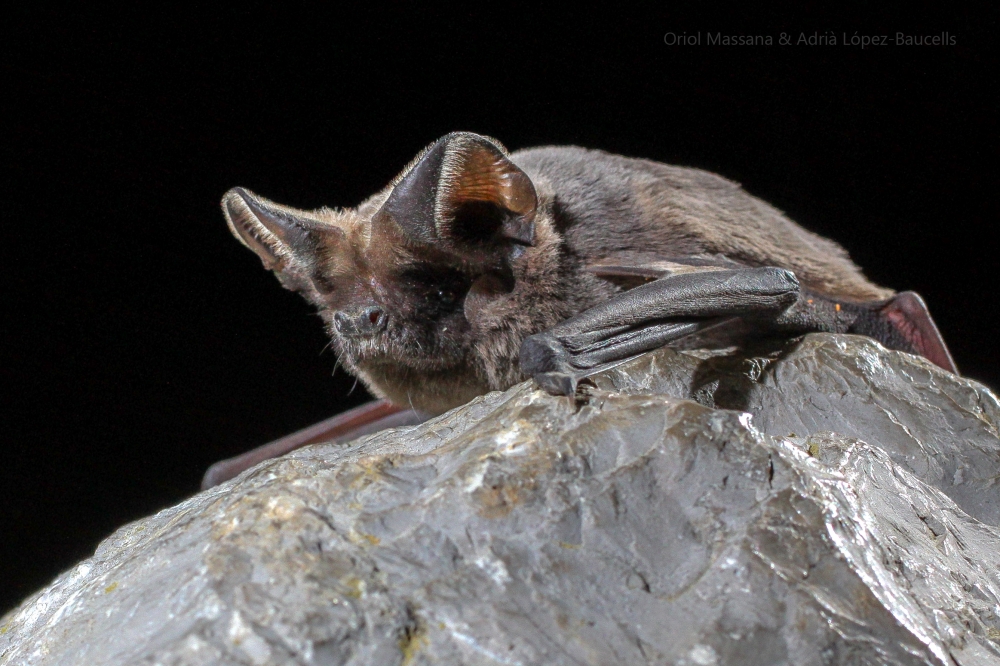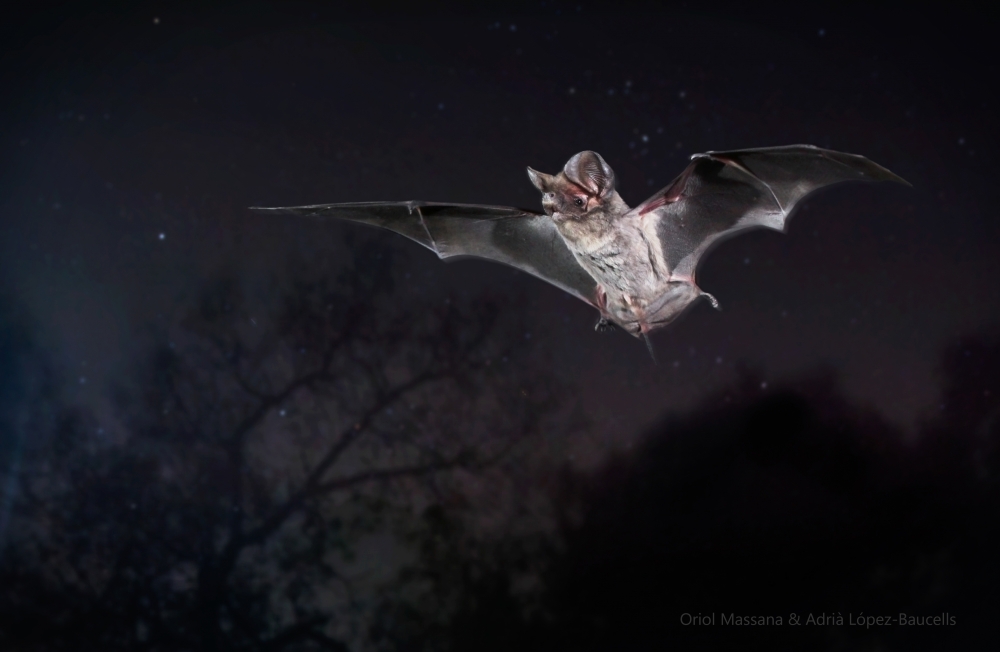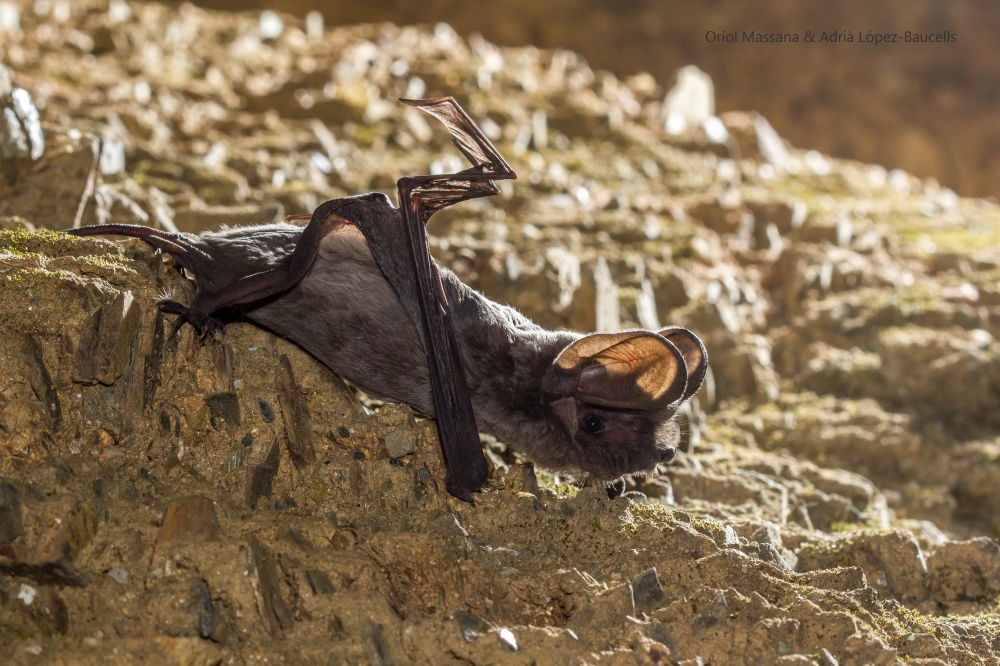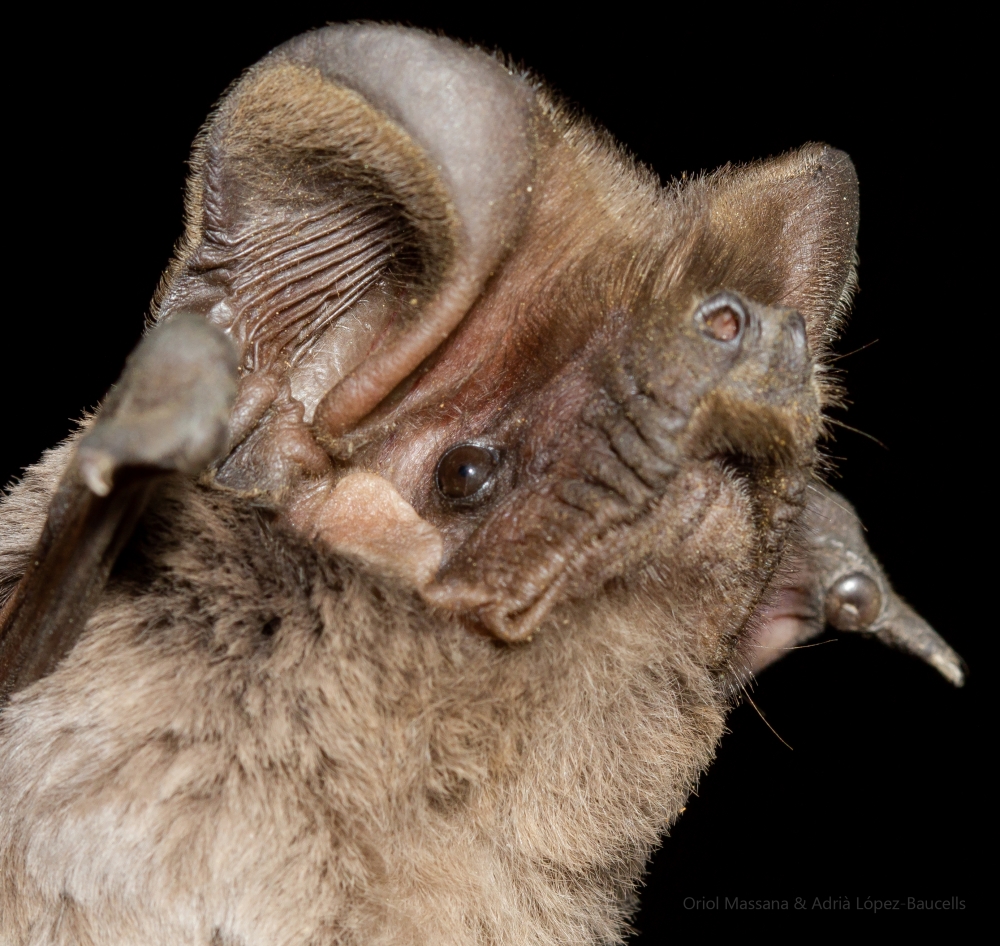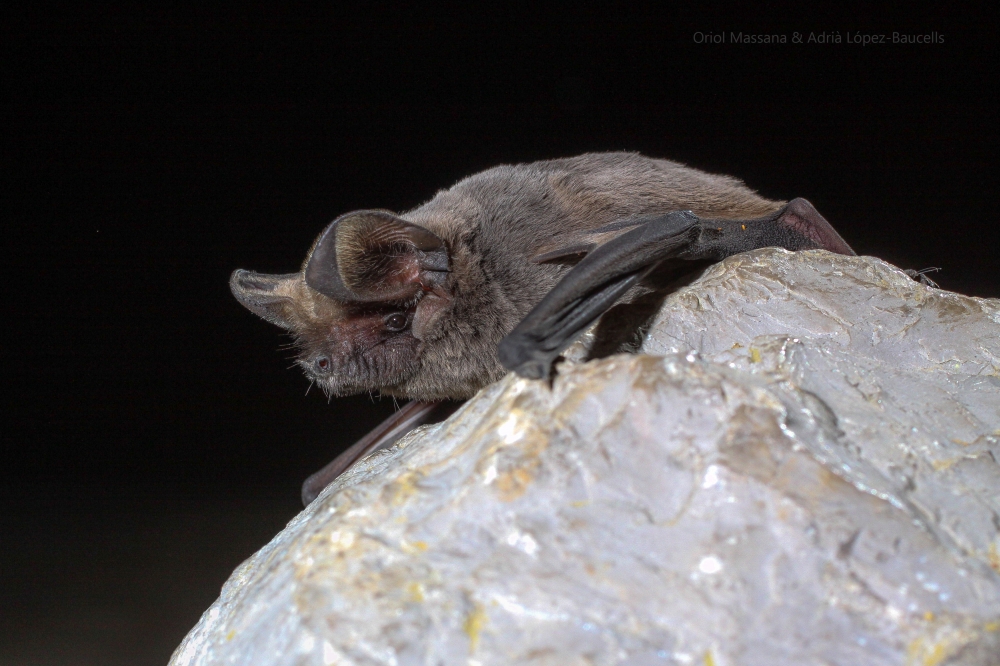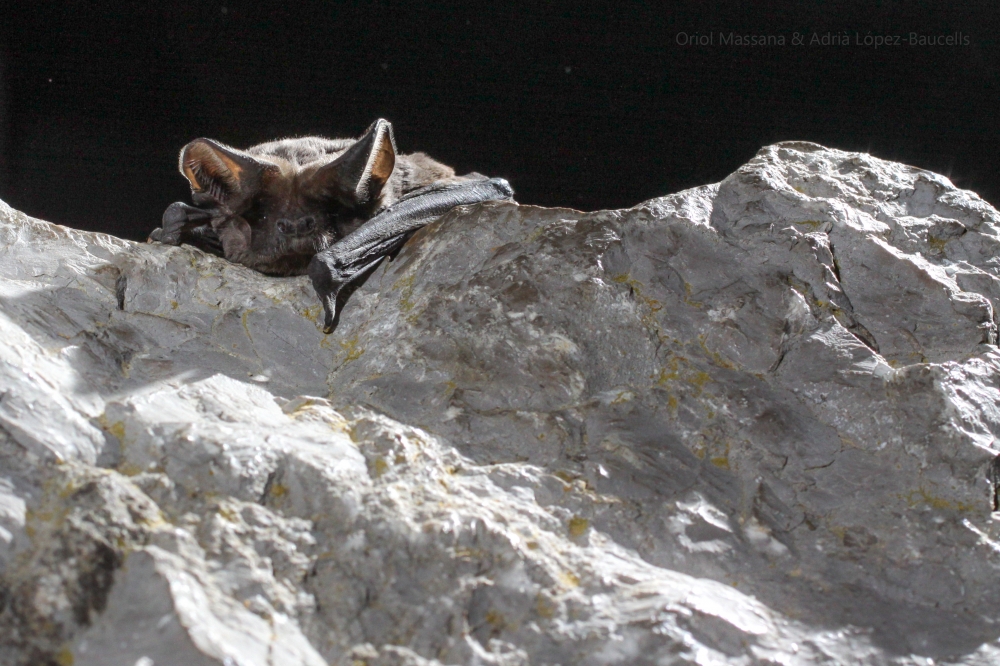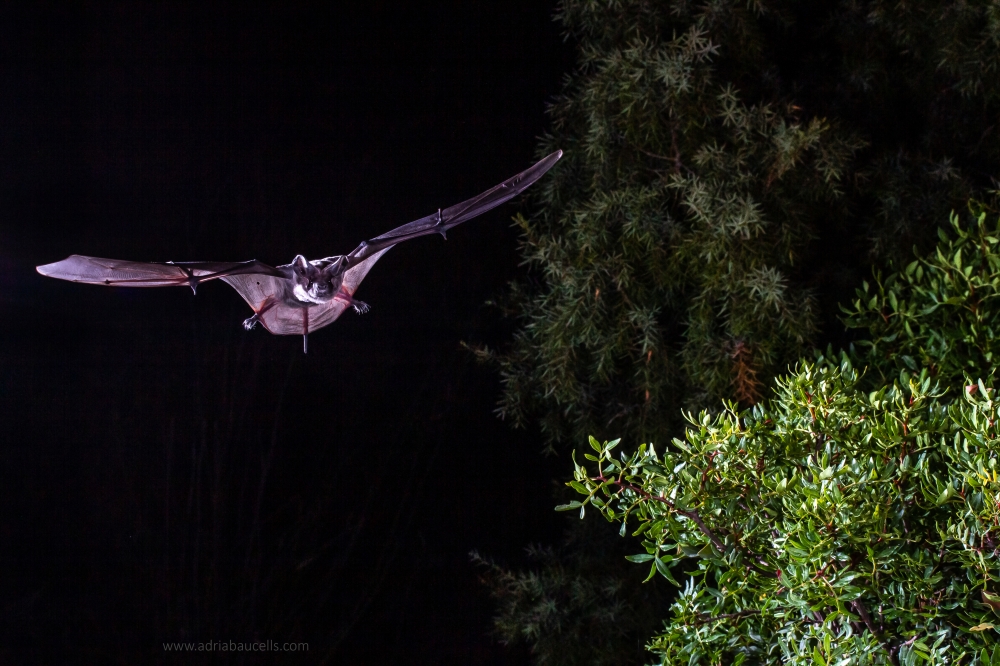Free tailed bat
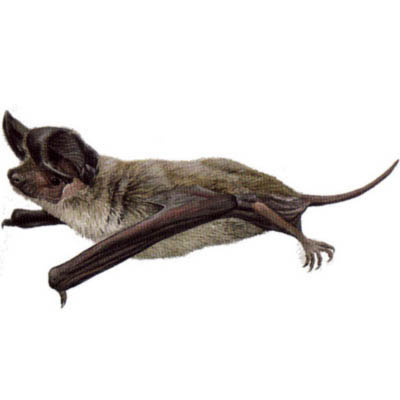
Tadarida teniotis (Rafinesque, 1814)
Molossidae
Least Concern
| Other names | |
|---|---|
| Catalan | Ratpenat cuallarg europeu |
| Spanish | Murciélago rabudo |
| English | Free tailed bat |
| French | Molosse de Cestoni |
| Basque | Saguzar buztanluze europar |
| Galician | Morcego rabudo |
Description
One of the largest bats in Europe, with a body length ranging from 80 to 90 mm, a wingspan between 400 and 450 mm, a forearm of about 54 to 70 mm, a tail between 44 and 57 mm, and a weight of 20 to 30 g. It is a large and robust bat, with big eyes, very large ears (about 27 to 31 mm), and long wings. The ears are round, facing forward, extending beyond the muzzle, and connected at the center. The upper lip has up to 5 folds and is large and flexible. The fur is short and soft, ranging from dark gray, silver-gray to brownish-gray, with the belly always lighter. It is the only bat in Europe that has more than half of its tail outside the uropatagium, a characteristic feature of molossid bats. It is unmistakable and cannot be confused with any other European species.
It is the fastest bat in Europe and one of the fastest animals on the continent. In a study conducted in Portugal, it was observed that this species can fly at altitudes of up to 1,600 meters high, aided by warm air currents, and at a speed of 135 km/h in horizontal flight.
Fotografies
Distribution
It has a circum-Mediterranean distribution, being found in southern Europe, up to the Caucasus and the Middle East. Its northern limit is in southern France and Switzerland, Croatia, and Bulgaria. There are occasional records in northern Switzerland, southern Germany, and on the island of Jersey in the United Kingdom. It is also found in the Canary Islands and Madeira.
Roosts and phenology
The typical roosts are narrow rock crevices, usually in high and inaccessible cliffs in mountains. Also in cracks in large and high caves, and in crevices in the facades of tall buildings and bridges. Occasionally in cracks in tall and isolated trees. Breeding colonies usually comprise between 5 and 50 animals, occasionally up to 400. However, in Nice (France), after the destruction of a building, around 1,000 free tailed bats were found dead, indicating the possibility of larger colonies. Births occur from late June to early July, extending until late August. A single pup is nursed until 6-7 weeks old.
Females are not sexually mature until the following year. Mating occurs in the fall and in April, during which mating groups form. No seasonal migration is known, although shelters are often changed within a distance of about 30 km. It is unknown whether this species hibernates.
Habitat and diet
It is found in all types of Mediterranean habitats, from sea level to 3,000 meters above sea level. It is usually located in mountainous landscapes and coastal areas that provide suitable shelters. It typically hunts above forests, plantations, and olive groves, but also over bodies of water, cities, and cultivated areas.
It feeds almost exclusively on flying insects, with 65-90% of its prey being large moths such as sphingids. Seasonally, insects like diptera, beetles, hemipterans, and hymenopterans are included as prey when they are abundant. It has a fast, straight, and powerful flight, with which it hunts directly for prey at altitudes between 10 and 300 meters. Flights of up to 100 km from the refuge can occur in a single night of hunting.
Echolocation
Very long calls, up to 27 ms in duration, with a quasi-constant frequency (QCF) structure. The frequency of maximum energy (FME) is usually between 12-17 kHz, typically around 13 kHz. It is one of the few bat species whose echolocation calls can be heard with the naked ear, audible up to about 100 meters away. The calls are similar to those of the greater noctule bat (Nyctalus lasiopterus), and therefore, they are included in the phonic group Tadarida teniotis/Nyctalus lasiopterus.
Trends
| General trend | Strong increase |
|---|---|
| Protocol | ChiroHabitats |
| Geographic scope | Catalonia |
| Number of localities studied | 95 |
| Annual change | 19.6 % |
| Method | TRIM |
| Analysis execution date | 01/09/2024 |
Status
According to the IUCN Red List, it is considered Least Concern, but with an uncertain population trend. This species is protected by national and regional laws in many countries, including the Eurobats agreement, the Bern Convention, and the European Union's Habitats and Species Directive. Locally abundant in some Mediterranean areas.
